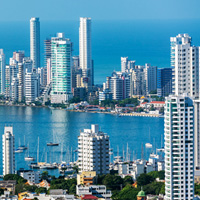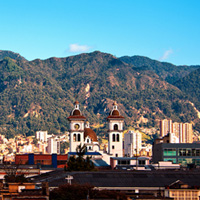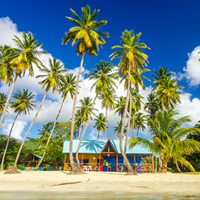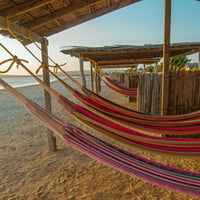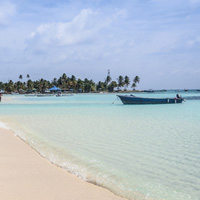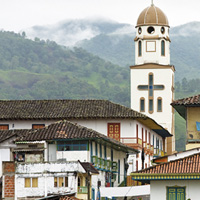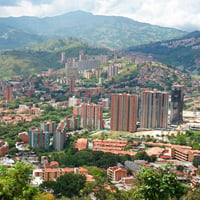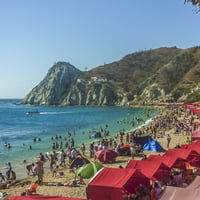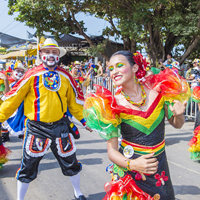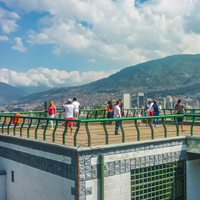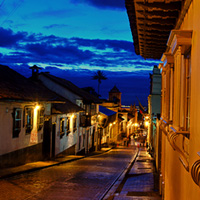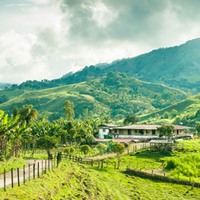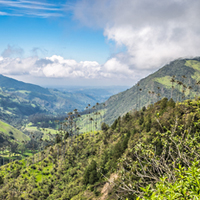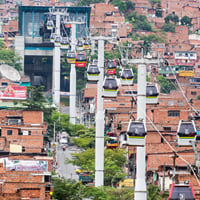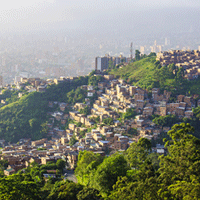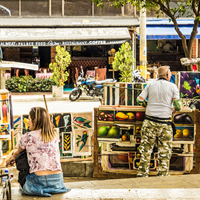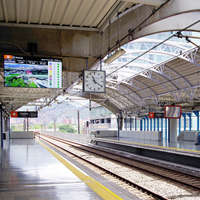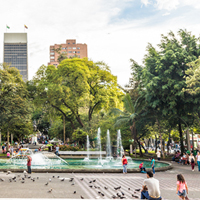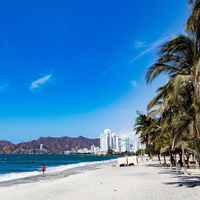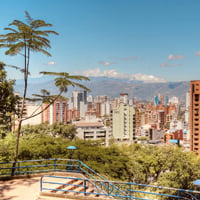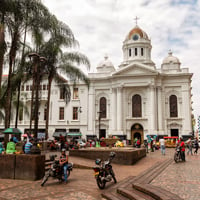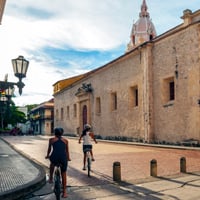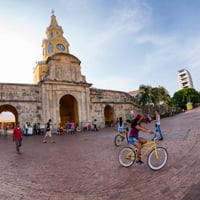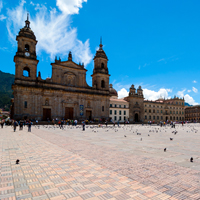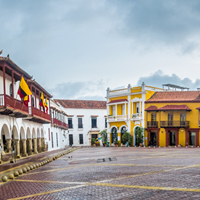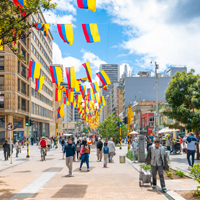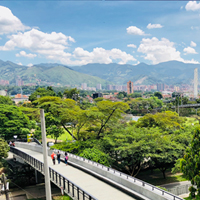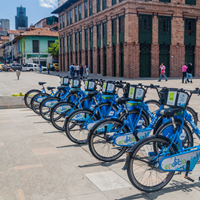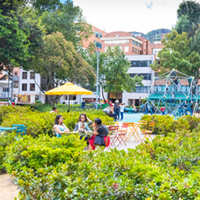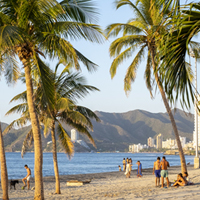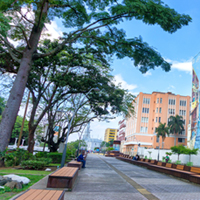Colombia
Coastal BeachesColombia has steadily emerged as a top destination for expats seeking adventure, affordability, and a high quality of life. Known for stunning landscapes that range from the Andes mountains to Caribbean beaches, Colombia offers something for a variety of different types of expats. If you're trying to find the best places to live in Colombia you've come to the right place!
The country's emerging economy, improving infrastructure, and significant increase in safety - relative to decades past - have made cities like Medellin, Bogota, and Cartagena popular hubs for digital nomads, retirees, and professionals alike. With a low cost of living, diverse climate options, and a well respected healthcare system, Colombia is increasingly recognized as a place where expats can thrive while enjoying an enriching and fulfilling lifestyle.
Colombia, officially known as the Republic of Colombia, is a country largely situated in the north of South America, with territories in Central America. It shares borders with five countries: Panama to the northwest, Venezuela and Brazil to the east/southeast, and Peru and Ecuador to the south/southwest. Additionally, it is bordered by the Caribbean Sea to the north and the Pacific Ocean to the west, making it one of the world's seventeen megadiverse countries and the most biodiverse per square kilometer.
The nation's capital, Bogota, is a bustling metropolis located in the Andean region and is the largest city in Colombia. Other major cities include Medellin, Cali, and Barranquilla, each known for their distinct cultural identities and regional traditions. Colombia's economy is majorly driven by substantial natural resources which include oil, coal, and emeralds. The country is obviously famous for coffee and it's also one of the biggest flower exporters on the global market.
The Colombian climate is tropical and isothermal due to its proximity to the equator, leading to minimal temperature variations throughout the year. However, climate can vary in different regions depending on the elevation, creating various weather patterns across the country. The benefit of that is that expats have a variety of options when trying to find their perfect climate, which obviously varies from person to person.
Colombia has a rich cultural heritage that is reflected in its music, dance, festivals, and art. Cumbia and Vallenato are some of the country's traditional music genres that have gained international recognition.
Despite its many attractions, Colombia has faced challenges such as political instability, social inequality, and the impact of drug trafficking. However, in recent years, the country has made significant progress in improving security and fostering a more stable environment. Tourism in Colombia has also grown, with people drawn to its rich culture, history, and natural beauty.
 GeoBlue
GeoBlueGet Quote
GeoBlue is a trusted leader in international health insurance. Wherever your destination, GeoBlue can keep you and your family covered with the right health insurance. Get a GeoBlue Quote Today!
 GeoBlue
GeoBlueGeoBlue is a trusted leader in international health insurance. Wherever your destination, GeoBlue can keep you and your family covered with the right health insurance. Get a GeoBlue Quote Today!
Get Quote
Living in Colombia
Best Places to Live in Colombia
Visa & Residency
Obtaining a residency in Colombia involves several steps and can be considered an average challenge for expats. The process begins with determining the appropriate visa type. The most common types are the Migrant Visa (M visa) and the Resident Visa (R visa). The M visa is suitable for those who intend to stay in Colombia for a medium-term duration and includes categories such as work, student, and retirement visas. One of the categories under the M visa, the M-11 visa, is particularly popular among digital nomads as it allows them to live in Colombia for up to three years. The R visa is for those seeking permanent residency and is typically granted to individuals who have already held an M visa for a certain period or who meet other specific criteria such as marriage to a Colombian national.
To apply for a visa, expats must first gather the required documents, which may include a passport, proof of financial means, health insurance, and a letter explaining the purpose of the stay. The exact documents required will depend on the visa category. Applicants must then complete the online application form on the website of the Colombian Ministry of Foreign Affairs, pay the visa fee, and schedule an appointment at a Colombian consulate or the visa office in Bogotá if they are already in the country.
During the appointment, applicants will submit their documents and may be interviewed. The processing time for a visa application can vary but typically takes a few weeks. Once approved, the visa is affixed to the passport, and the individual can travel to or remain in Colombia as a legal resident.
The difficulty of the process can vary based on the applicant's nationality, the completeness of their application, and their ability to meet the visa requirements. It is advisable for expats to seek legal advice or assistance from a visa agency to navigate the process smoothly.
Healthcare in Colombia
The healthcare system in Colombia is a combination of public and private services. The public healthcare system, known as the General System of Social Security in Health (SGSSS), is designed to provide universal coverage to all citizens and residents, including a subsidized regime for the poor and vulnerable, and a contributory regime for those with the means to pay. Private healthcare in Colombia is also available and is often preferred by those who can afford it for its higher quality of service and shorter wait times. The quality of healthcare in Colombia varies; major cities like Bogotá, Medellín, and Cali have well-equipped facilities and highly trained medical staff, while rural areas may lack resources. The cost of healthcare is generally lower than in the United States, making Colombia a popular destination for medical tourism. Expats and digital nomads can access public healthcare by contributing to the contributory regime if they have a visa that allows them to reside in Colombia for more than three months. However, many expats choose to use private healthcare services or purchase private health insurance.
Cost of Living
The cost of living in Colombia is considered moderate compared to many Western countries, with lower expenses for housing, food, and services.
Weather
Colombia has a diverse climate that varies significantly depending on altitude and geography. The coastal regions and lowlands typically experience a tropical climate with high humidity and temperatures, while the Andean highlands have cooler temperatures and a more temperate climate. The Amazon rainforest in the south of the country is hot and humid, and the eastern plains can have a more savanna-like climate with a distinct wet and dry season.
Educational System in Colombia
The educational system in Colombia is structured into several levels: preschool, basic education (primary and secondary), and higher education. Preschool, for children under 5, is not mandatory. Basic education starts at age 5 or 6 with primary education, which lasts five years, followed by secondary education, which is divided into two cycles: basic secondary (four years) and middle vocational (two years), which can have a vocational or technical focus. After completing these 11 years, students receive a high school diploma. The school year typically runs from January to November. Public education is free up to the secondary level, but schools may charge fees for additional services. The quality of education varies widely, with private schools and schools in urban areas generally offering a higher standard of education. The government has been working to improve education quality and access, particularly in rural areas. Parents moving to Colombia will find a range of educational options, including international schools that offer curricula from other countries and are often attended by expatriate children.
Copyright 1997-2025 Burlingame Interactive, Inc.


